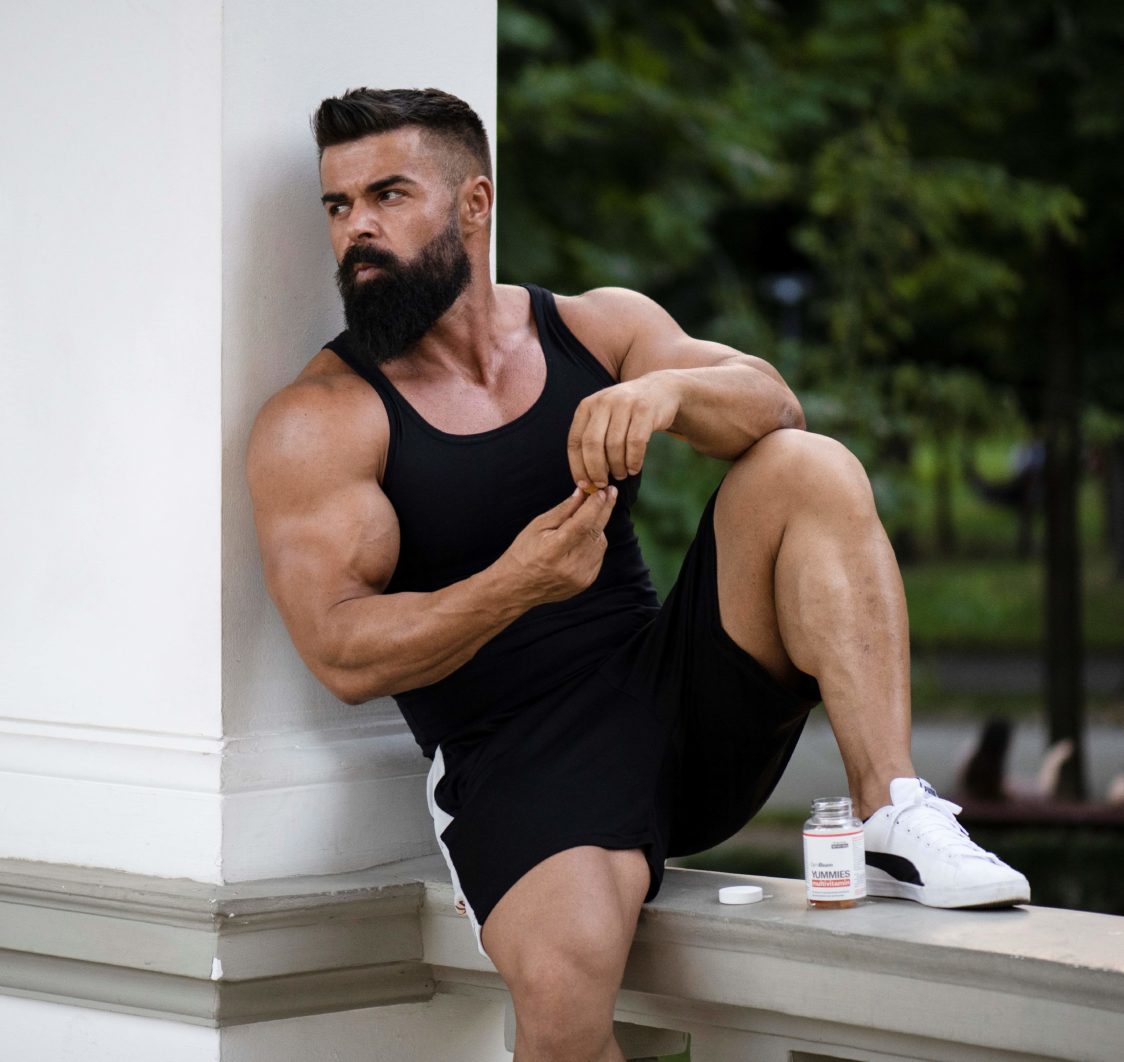How does hormonal imbalance affect the muscle mass of men and women?
Hormones are important products of the human body’s glands, and their levels affect health and muscle mass. During life, hormone levels naturally and “unnaturally” change. Puberty and menopause are to blame, but stress or poor lifestyle can cause an imbalance too. Learn all the essentials about hormones, their effect on exercise, but also changes in their levels during life.

Hormones and the endocrine system
Hormones are chemicals produced by the glands, and are a kind of chemical “messengers” that travel through the bloodstream. Their role is to transmit information in the human body, and this function is similar to the nervous system, but in this instance, hormones are used instead of nerve impulses. They affect almost every cell and organ in the body, and simply put, they dictate tissues and organs “what to do and how to do it”.
Hormones and exercise
Proper hormone levels are very important for the optimal functioning of the body, and logically therefore affect exercise and muscle growth. Hormones are divided into steroid, peptide and amine, in addition they can be anabolic or catabolic. Anabolic are important for tissue growth and catabolic break it down. In the following list you will find several hormones that are related to exercise [24] [25] [26] [27] [28]:
- Insulin – is important for the metabolism of carbohydrates and fat, because it ensures the absorption of glucose in the bloodstream. In addition, it can cause fat not to be used as fuel for muscles, but stored in adipose tissue. Insufficient insulin sensitivity can grow into insulin resistance or even type 2 diabetes. You can influence the proper functioning of insulin in the body with a healthy lifestyle.
- Cortisol – also known as a stress hormone because it is excreted under stress. During long workouts, it supports the breakdown of triglycerides and proteins to produce glucose, which the body uses as a source of energy during training. However, it should be mentioned that overtraining is also a form of stress that causes cortisol secretion. Sleep and regeneration between workouts are important for maintaining optimal cortisol levels, which you can also support with your protein or BCAA intake.
- Testosterone – is associated mainly with men, but we also find it in women, although less than 10%. This hormone has anabolic effects on the muscles, thus supporting the growth of muscle mass and strength. For women, it is beneficial for muscles, bones and sexual desire.
- Growth hormone – an anabolic peptide hormone with a function that comes from its name – to promote cell growth. It is formed during sleep and is stimulated by intense, strength or cardio training.
- Glucagon – is responsible for the release of free fatty acids from adipose tissue at low blood sugar levels, which are used to increase glucose levels. Simply put, it is a hormone to prevent your blood sugar from falling too low.
- Epinephrine and norepinephrine – are catecholamines also known as adrenaline and noradrenaline. Their role is to support the production of energy to the sympathetic nervous system and the control of bodily functions during cardio. They increase the heart rate in the body, blood sugar levels, the contractility of the heart (the force with which the heart compresses) and epinephrine even promotes improved breathing due to the relaxation of smooth muscles in the airways.
- Insulin-like growth hormone – is needed for muscles and their growth, because it supports the activity of growth hormone by repairing damaged proteins during training.
- Brain neurotrophic factor (BDNF) – takes care of the formation of new cells in the brain, which improves cognitive function. During intensive training, you not only ensure the production of growth hormone and insulin-like growth hormone, but also BDNF, which is beneficial for cells in the brain.

Hormones and muscle growth
Hormones perform many functions in the body and some of them are related to muscles and body weight. Anabolic and catabolic processes take place in the body, in which certain hormones are present. Anabolism is the process by which small molecules become complex with the help of energy obtained by catabolism. Conversely, catabolism occurs during digestion, when molecules are broken down and the body uses them as a source of energy. Anabolic processes include, for example, the growth of muscle mass or bones. In catabolism, large molecules are broken down into smaller ones, such as proteins into amino acids. [29] [30] [31]
The following hormones are present in anabolism and catabolism [29]:
Anabolism – testosterone, estrogen, growth hormone and insulin
Catabolism – adrenaline, cortisol, glucagon and cytokines
Anabolic state is desirable for athletes and active people who want to gain (and also maintain) muscle mass. They follow a nutritional program that aims to provide enough nutrients before and after training to provide fuel for training and maintain anabolic state. In addition to diet, however, another factor is an important part of the anabolic state – sleep.

Hormonal changes in men and muscle growth
Probably the first major hormonal changes in a man’s life begin at puberty. In the hypothalamus, the production of the hormone gonadotropin begins, which causes an increase in testosterone levels. By the way, gonadotropin in puberty also affects women and estrogen production.
Testosterone is an important hormone that affects several functions and its levels change throughout life. It rises during puberty and reaches its peak at the end of adolescence. A phase of decline follows, and after the age of 30, it is natural for testosterone to decline every year. Its level is also important for muscle growth and strength. It affects DNA receptors, which causes protein synthesis and increases transmitters, thereby promoting tissue growth and, last but not least, increasing growth hormone levels. The effect of testosterone is complex and, in addition to muscle, it also has something to do with fat metabolism or bone density.

Another case of hormonal changes in a man’s life can be a hormonal imbalance. In addition to natural reasons, such as puberty or aging, there are others, such as lack of exercise, poor lifestyle or stress. Symptoms include lack of energy, decreased sexual desire, low sperm count, reduced hair growth and more. Imbalances can occur at any time in life, and even already in one’s 30s.
Hormonal imbalance may be slightly inconsistent, so it is difficult to recognize it from time to time. There are 5 symptoms that indicate an imbalance and may be due to reduced testosterone levels:
- low libido
- erectile dysfunction
- gynecomastia (breast enlargement)
- muscle loss and fat gain
- mood swings
Another topic that is often discussed is “male menopause”. This term refers to a decrease in androgens and testosterone, as well as delayed-onset hypogonadism. Although the term “menopause” is used, these hormonal changes are different in men. The end of ovulation and rapid production of hormones occurs in women in a relatively short period of time, but in men it is a gradual longer decline. Symptoms include decreased muscle mass and physical weakness, increased fat, difficulty concentrating, depression, infertility or erectile dysfunction. It is said that life has its highs and falls, in the case of testosterone it starts with puberty and ends with the male version of menopause.
Hormonal changes in women and their effect on muscles
Hormonal changes during life affect both sexes, and women are no exception. Hormone levels are high after birth, but fall within a few months and increase significantly during puberty. In men, gonadotropin triggers testosterone production and in women estrogen production. The onset of menstruation is also associated with puberty. Puberty in girls lasts about 3-4 years and just as a fun fact, African American and Hispanic girls start puberty slightly earlier.
Hormonal changes also occur during the menstrual cycle. Estrogen levels fall and rise up to 2 times during the cycle. The first increase in estrogen during the middle follicular phase and decreases after ovulation, the second increase occurs in the middle luteal phase and decreases at the end of the cycle. Regarding the reproductive years in a woman’s life, it is necessary to mention PMS (premenstrual syndrome) and its symptoms. PMS is considered to be all pre-period symptoms, such as mood swings, tenderness, anxiety, anger, convulsions, breast tenderness, or diarrhea. Some experts believe that mood swings are associated with hormones, and that certain hormone metabolites in the brain may be responsible for mood swings, or that hormone metabolism is already different in some women. Other scientists are of the opinion that mood swings may not immediately mean fluctuations in hormone levels. That certainly cannot be said yet. Either way, women seem to experience more frequent hormone fluctuations than men.
Menopause is a crucial period in a woman’s life when hormonal changes occur. Around the age of 50, the ovaries reduce the production of the hormones estrogen and progesterone. Menopause is defined as a period of 12 months or more without a menstrual cycle. It is manifested by hot flushes, decreased libido, depression, vaginal dryness or osteoporosis.

According to scientists, estrogen is a kind of regulator of muscle cell viability and muscle energy metabolism. Estrogen production is stopped by menopause, which has an impact on the deterioration of muscle condition, in addition, there is a higher risk of metabolic diseases after menopause. You can reduce this risk with a healthy lifestyle, but it will not affect your estrogen levels. In addition to muscles, menopause has a more complex impact, because as you start losing muscles, bone density is lost too and the risk of osteoporosis increases. Needless to say, changes in density potentially increase the possibility of fractures. As if that wasn’t enough, in addition to muscles and bones, it also affects the joints, which are painful and stiff due to changes. The human body will never be young again, but you can alleviate these symptoms with regular exercise.
Treatment of hormonal imbalance
There are various medications for treating hormonal imbalances, but you can also reduce the risk and symptoms of the imbalance by changing your lifestyle or using natural supplements. Regular exercise, a balanced diet, stress control or maintaining an optimal body weight are just some of the changes that can help. However, you can also try natural ways such as ginseng and maca for erectile dysfunction. Ginseng can also be beneficial for menopausal symptoms such as anxiety, sleep disorders or irritability. Hot flushes caused by menopause can be treated with red clover, evening primrose oil or black cohosh.






